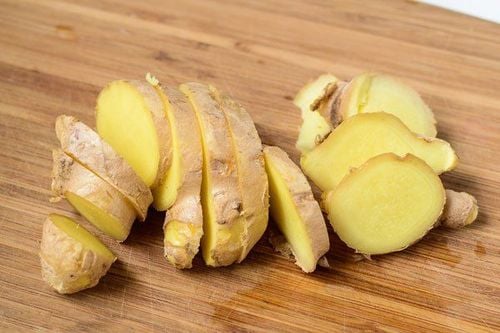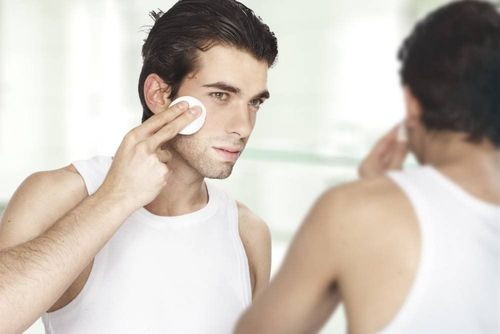Skin with many sebaceous filaments is a common issue that causes discomfort for both men and women, regardless of whether they are in puberty or adulthood. So, what are sebaceous filaments? How can you remove sebaceous filaments on your nose at home? Let’s explore more through the article below.
1. What are Sebaceous Filaments?
Before discussing the definition of sebaceous filaments, we need to understand what sebum is and how it is formed.
Sebum is one of the components that is inherently present on our skin, especially in areas like the face, nose, and back. Its function is to maintain skin hydration and limit the invasion of external bacteria. Essentially, sebum plays an important role in the skin, however, if the sebaceous glands on our face are overactive, the skin can become acne-prone and more sensitive compared to other skin types.
Sebaceous filaments appear due to the disordered activity of sebaceous glands on the skin. These filaments can be located deep within the hair follicles or appear on the surface of your skin. Sebum is formed from oily secretions on the skin, excess lipids, combined with dirt and dead skin cells. Because they are filaments of the sebaceous glands, they are usually white, or off-white, opaque white, soft, and easy to remove.
Sebaceous glands are concentrated in areas of the face with highly active sebaceous glands, most notably in the T-zone. In these areas, sebum often concentrates in patches. Therefore, we can see sebum plugs concentrated in the nose, chin, and forehead. Especially around the nose, the concentrated sebaceous filaments make the nose rough and unattractive.
The main cause of the increase in sebaceous filaments on the nose is increased sebum secretion. Unlike blackheads and whiteheads, which often clog pores, thereby forming acne, sebaceous filaments do not cause blockage of hair follicles or pose a much smaller risk of blockage. The white filaments or yellowish fluid that we often squeeze out on the nose, chin, or sides of the nose will be continuously pushed out by the sebaceous glands. As mentioned, the pores in the nose area are typically larger and tend to accumulate the most oil. This is why the sebaceous glands are most active on the nose. In addition, the combination of internal and external skin factors also causes sebum. When the hormones in your body change, with the impact of dirt on the skin surface androgens, growth hormones, and the thyroid gland will stimulate the sebaceous glands to work harder, from there, the skin will increase oil secretion and cause the appearance of sebaceous filaments.
Not thoroughly cleaning the skin around the nose is also the root cause of the overgrowth of sebaceous filaments. It's true that we are exposed to a lot of dust daily and often apply multiple layers of makeup. If the skin is not thoroughly cleansed, it can easily lead to clogged sebaceous glands in the nose area.
Sebaceous filaments are an essential part of the skin, meaning we can never completely eradicate them. Because it goes along with the sebaceous glands, and when the sebaceous glands are still active, the sebaceous filaments continue to be produced. Sebaceous filaments are basically not very harmful to the skin. However, when our facial skin has too many sebaceous filaments, it will clog the hair follicles, making it difficult for the skin to detoxify. In addition, polluted air conditions will cause acne. In addition, the most obvious harm of sebaceous filaments is that they negatively impact the appearance of your facial skin. It makes it more difficult for the skin to absorb skin care products. Besides, when using makeup products on the skin, it does not give you a satisfactory appearance, for example, making the foundation not smooth, flaky, or unattractive.
For people with many sebaceous filaments on their skin who regularly wear makeup, if they do not remove makeup carefully, cosmetics easily accumulate around the sebaceous glands, which can eventually cause acne or skin allergies.
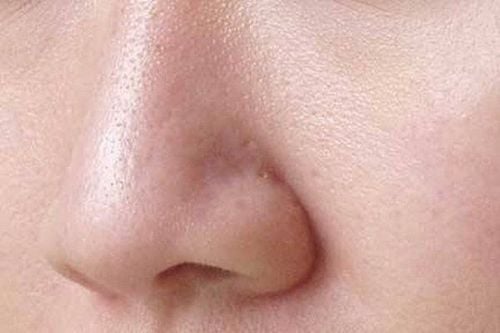
2. Effective Home Remedies for Sebaceous Filaments on the Nose
2.1. Steam Therapy
Steam therapy is a method that opens pores, making it easier for sebum to be released. The nature of steaming also helps detoxify the skin, remove excess sebum, and regenerate the skin. However, steaming can enlarge your pores, so after each steaming session, it's essential to use toners or pore-minimizing products. It's essential to steam in a clean environment to prevent bacteria from easily entering the skin.
Ingredients:
The ingredients for steam therapy at home are easy to find and simple. However, it's important to be mindful when purchasing them to ensure you get the best quality for your beauty routine.
- Lemongrass: 3-4 stalks, crushed
- Lemon: 1 squeezed into the pot
- Ginger: 1-2 slices, crushed
- Salt
Instructions:
Cover your face with a towel and slowly lift the lid of the pot to let the steam escape. Be careful not to open the lid completely, as the hot steam can burn your face and even cause skin burns.
Usually, each person can steam for 5-7 minutes. Those concerned about enlarged pores can reduce the steaming time. Facial steaming also provides a relaxing and comfortable feeling, similar to a spa treatment.
2.2. Deep Cleansing
To minimize the appearance of sebaceous filaments on the facial skin, the first principle is thorough deep cleansing. This is because merely cleaning the skin's surface (with a facial cleanser) is often insufficient to remove excess oil, dirt, and makeup residue—common causes of sebaceous filaments. Some deep-cleansing methods that can be performed at home include:
Using Cleansing Oil: The "oil dissolves oil" mechanism helps clean the skin, remove sebum, and eliminate oil-based components in makeup.
Facial Cleansing Devices: Compared to using hands, facial cleansing devices provide better cleaning results. You can choose a suitable product based on your needs and budget.
2.3. Applying a Clay Mask
Currently, many types of clay masks are sold on the market with the function of cleaning sebum on your nose. However, choosing a high-quality clay mask is essential to achieve the desired results in cleaning sebaceous filaments. One recommendation is the Innisfree Clay Mask, a product known for its ability to exfoliate and effectively remove sebaceous filaments.
- Step 1: Remove makeup, then wash your face with clean water and facial cleanser. Then, use toner to balance the skin's pH and steam your face to open the pores.
- Step 2: Apply a thin layer of cream to your face. Avoid applying too much, as this can dry out your skin.
- Step 3: Keep the cream on for about 10-15 minutes and rinse with clean water. Do not leave it on longer than this time, as the mask, after drying, will draw moisture from the skin, making the masking process less effective.
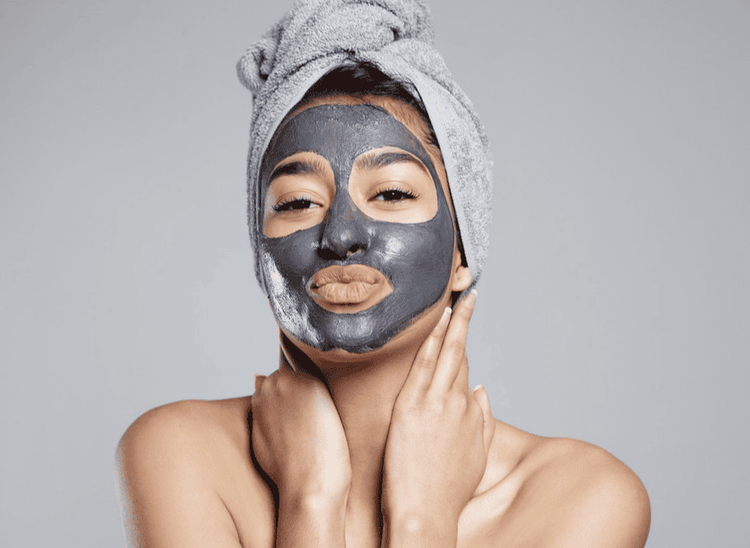
2.4. Using a Pore Vacuum.
If you don't want to go to a spa regularly for acne extractions, you can buy a handheld pore vacuum for home use. With their compact and convenient size, these tools can help you easily remove blackheads and sebaceous filaments in just a few minutes.
2.5. Using Natural Products
Here's a tip for cleaning sebaceous filaments on the nose using oatmeal and yogurt. Try it and feel the effectiveness of this simple home method. The oatmeal and yogurt mask will help clean sebaceous filaments gently without causing skin irritation, even for those with the most sensitive skin. You should apply this mask twice a week to deeply cleanse the skin and prevent sebaceous filaments from forming and developing further.
The method is simple and based on easily accessible ingredients:
- Mix 1 teaspoon of oatmeal with 2 teaspoons of unsweetened yogurt.
- Apply the freshly mixed mask to the skin where sebaceous filaments are present.
- Wait about 10-15 minutes for the mask to dry, then gently massage with your hands in circular motions to loosen the sebaceous filaments.
- After that, wash your face thoroughly with warm water and pat dry with a soft towel.
2.6. Exfoliation
The simplest way to clean sebaceous filaments is exfoliation. The composition of sebum is not as stubborn as acne, so cleaning the skin and exfoliating helps remove sebum and makes the skin smoother. Depending on your skin type, use a suitable exfoliant. For those with oily, acne-prone skin, use natural, gentle exfoliants that are gentle on the skin, and don't use them too frequently, as this can thin the skin.
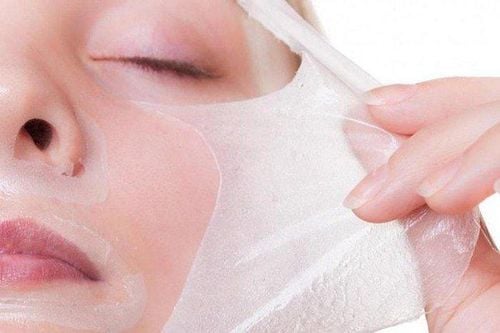
3. Prevention of Sebaceous Filaments on the Nose,
Sebaceous filaments on the skin are not a pathological condition or a life-threatening disease, however, to minimize the risk of blockage, inflammation, and breakouts, and to achieve smoother, cleaner skin, we need to change our eating and lifestyle habits. Specifically:
Diet: You should limit eating fatty foods, fried foods, and foods that are not good for cardiovascular health and weight loss, as they can cause skin problems. For example: increased sebum secretion, skin lipids, clogged pores, etc. In addition, you should also limit foods that increase body heat, leading to liver damage and breakouts. For healthy, glowing skin, you need to supplement with essential vitamins found in vegetables and fruits, such as Vitamin A, vitamin D, vitamin E vitamin K, vitamin C, and B vitamins, etc.
Lifestyle: Lifestyle greatly influences the activity of the sebaceous glands on the skin. You should not stay up too late and must maintain a good mental state to help stabilize hormones in the body. In addition, exercising at the right intensity also helps the skin become healthier, giving it a chance to detoxify and excrete through the sweat glands. A healthier, more flexible body will help produce more beneficial hormones for the skin. Most importantly, maintain cleanliness in your living environment and minimize bacteria entering the skin. Remember to wear a mask when going out and avoid touching your face. Dirt on the face is the main cause of acne and sebum.
Skincare Routine: Whether you have many sebaceous filaments on your face or not, you should take care of your skin regularly and follow the correct steps. Cleanse your skin thoroughly with at least two steps: makeup removal and facial cleansing. Add moisturizing and skin-balancing products, and never forget daily sunscreen as well as exfoliation 2-3 times a week.
Many people often wonder why they have a very scientific diet, lifestyle, and skin hygiene routine but still have sebaceous filaments on their skin, especially on the nose. In fact, whether you have many acnes or sebaceous filaments also depends on each person's hormones. For these cases, in addition to regular home skincare, you should seek acne treatment and sebum-reducing treatment at reputable cosmetic hospitals or dermatology hospitals.
Please dial HOTLINE for more information or register for an appointment HERE. Download MyVinmec app to make appointments faster and to manage your bookings easily.
To arrange an appointment, please call HOTLINE or make your reservation directly HERE. You may also download the MyVinmec app to schedule appointments faster and manage your reservations more conveniently.

